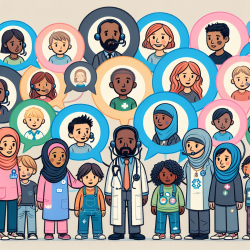Introduction
The increasing migration of children across international borders has brought to light the pressing issue of child labor exploitation and trafficking. As healthcare professionals, it is imperative to recognize and assist these vulnerable children. The research article "Strategies for healthcare professionals to identify and assist migrant children at risk of labour exploitation or trafficking" provides valuable insights into this issue. This blog aims to distill key findings from the research and encourage practitioners to improve their skills and conduct further research.
Understanding the Risks
According to the research, many migrant children are at high risk of exploitation due to factors such as social marginalization, unfamiliarity with labor laws, and economic pressures. Healthcare professionals often encounter these children in various settings, including clinics and emergency departments. Recognizing the signs of exploitation is crucial for providing the necessary support and intervention.
Key Strategies for Practitioners
The research outlines several strategies for healthcare professionals to effectively identify and assist at-risk migrant children:
- Conducting Comprehensive Assessments: Evaluate the child's physical and mental health, safety, and well-being within their cultural context. Consider the child's desires and goals, as well as the family's socioeconomic conditions and cultural norms.
- Legal Framework Evaluation: Understand the legal framework regarding child labor, exploitation, and trafficking in the host country. This knowledge is essential for making informed decisions about mandatory reporting and advocacy.
- Cultural Humility and Engagement: Engage with patients and families with cultural humility and open-mindedness. Understanding cultural views on child labor and employment can empower healthcare professionals to support at-risk children effectively.
- Collaboration and Advocacy: Collaborate with community organizations and advocate for increased monitoring of labor practices. This includes advocating for resources to support migrant children in educational settings.
Encouraging Further Research
While the research provides a foundation for identifying and assisting at-risk migrant children, it also highlights the need for further research. Practitioners are encouraged to explore additional studies and data to refine their skills and approaches. By staying informed and engaged with current research, healthcare professionals can continue to improve outcomes for vulnerable children.
Conclusion
Healthcare professionals play a critical role in identifying and assisting migrant children at risk of labor exploitation or trafficking. By implementing the strategies outlined in the research and engaging in further study, practitioners can enhance their skills and contribute to better outcomes for these children. To read the original research paper, please follow this link: Strategies for healthcare professionals to identify and assist migrant children at risk of labour exploitation or trafficking.










